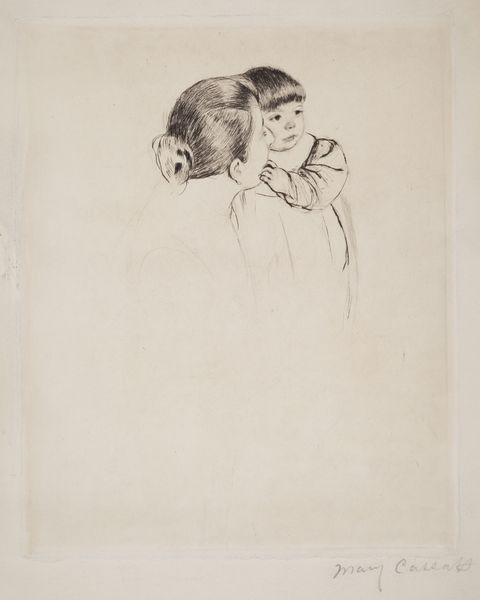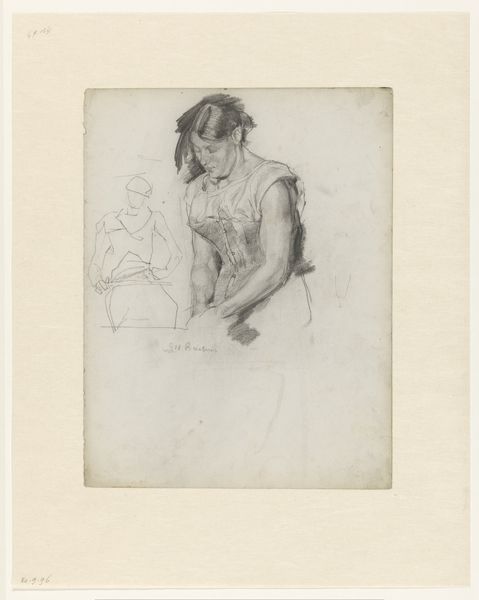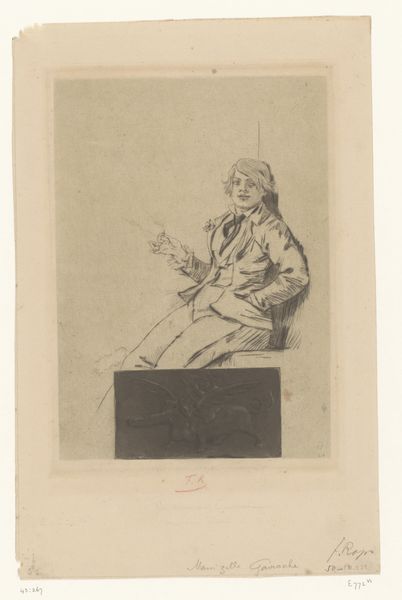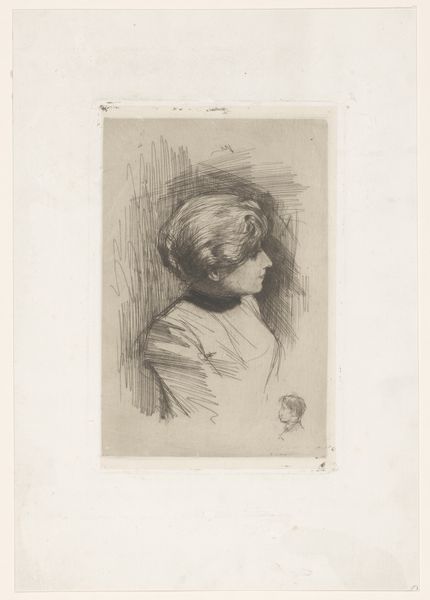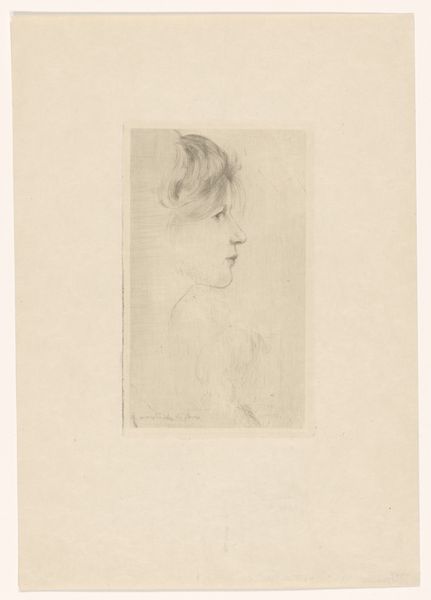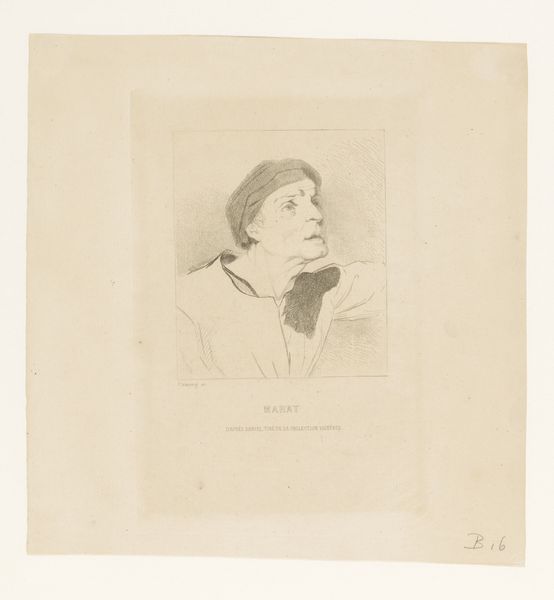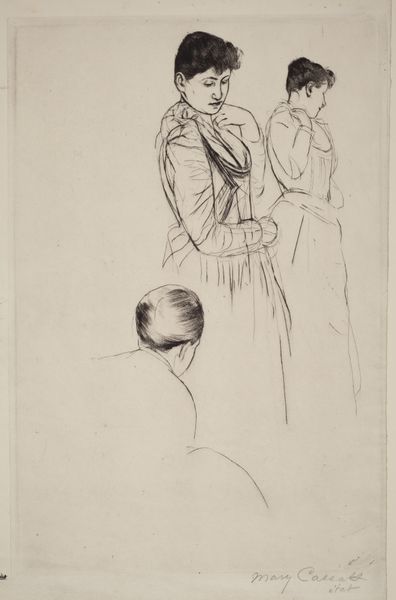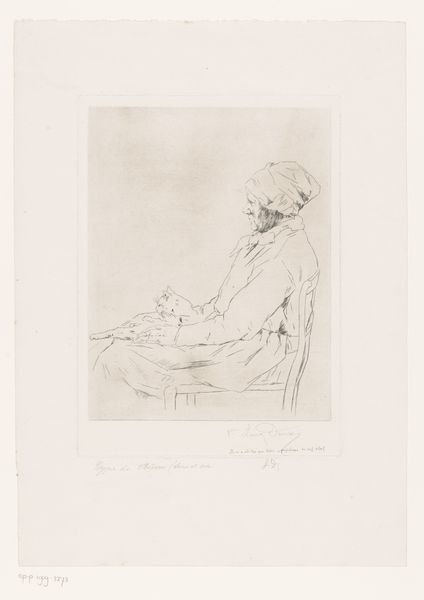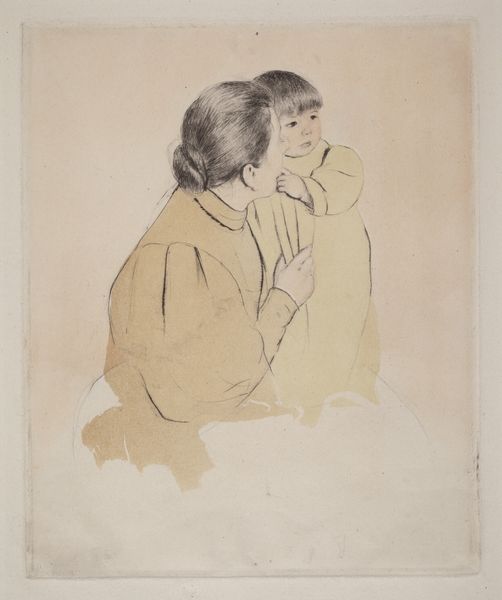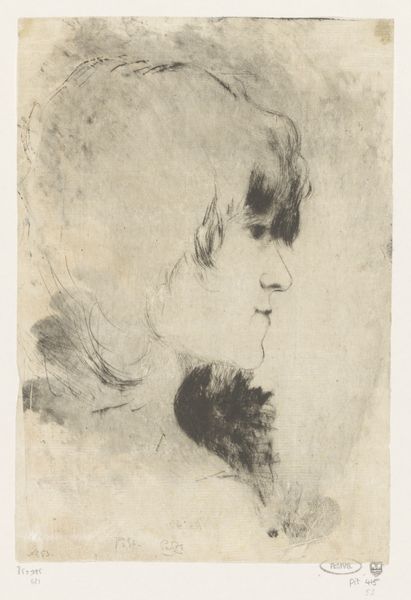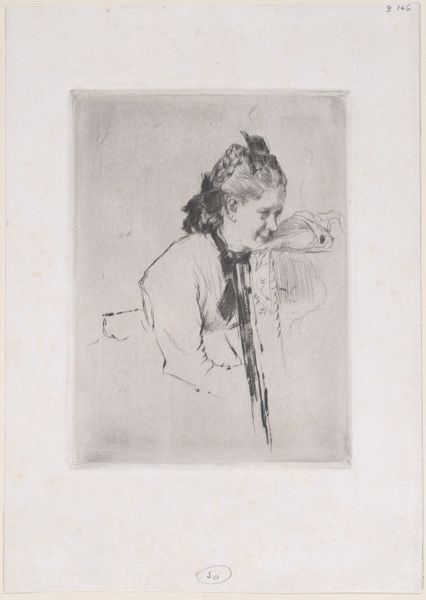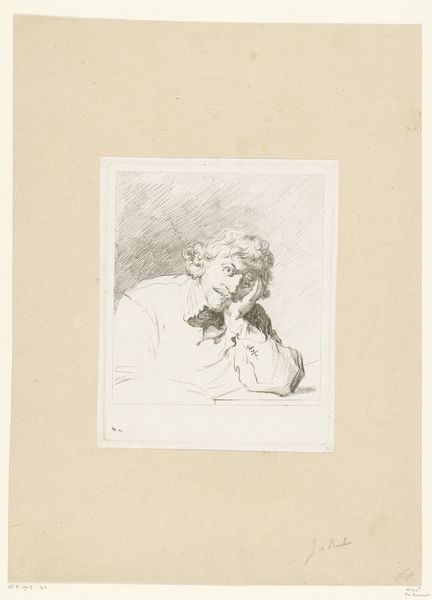
drawing, print, paper, pencil
#
portrait
#
drawing
#
mother
# print
#
figuration
#
paper
#
child
#
pencil drawing
#
pencil
Dimensions: 292 × 239 mm (image/plate); 395 × 312 mm (sheet)
Copyright: Public Domain
Curator: Immediately, I see tenderness. It’s subtle, in the light pencil strokes, but so present. Editor: Yes, that restraint is powerful. We are looking at “Peasant Mother and Child,” a print by Mary Cassatt, circa 1894, at The Art Institute of Chicago. Its apparent simplicity makes me think of the very labor involved in creating images on this scale. Curator: I’m struck by her choice to depict a peasant mother. Cassatt, a woman of means herself, consistently turned her artistic gaze towards the quiet dignity of everyday domestic life, particularly that of women, especially working women, and children. Editor: Right, and let’s remember, printmaking itself – especially lithography, which I think this might be, allowed for a wider distribution of images, bringing art to the middle classes, engaging with consumer culture. Were these images then sold, traded, acquired as tokens or collectibles? Curator: I believe her work allowed for greater empathy amongst viewers toward motherhood, showing its raw simplicity to richer classes. This could even suggest how mothers were generally seen at the time and Cassatt’s interest in changing perspectives. Editor: The material constraints, like the size of the printing stone, and the social possibilities of distributing printed images cheaply, both feed into what that image *means* for a late 19th-century audience. Was she aiming to dignify this scene by turning it into an object for the marketplace? Curator: Well, perhaps she hoped to bridge a gap of understanding. There is so much quiet intimacy that transcends class – the child’s gaze, the protective arm. Editor: Yet the ‘everyday’ is still rendered here through a painstaking technical process – grinding pigments, transferring images. I’m curious to know the social status of the laborers making the ink she uses and about her printmaking studio and practices. Curator: In truth, every piece reveals both, and our responses, however varied, weave through the stories embedded in it. I suppose I was drawn to its intimacy; you, to the grander machinery behind its manifestation as something we can view here today. Editor: Yes, from paper pulp to the gallery wall, tracing the production helps one to understand how meanings accumulate to make an artwork seem simple, moving, or simply "art."
Comments
No comments
Be the first to comment and join the conversation on the ultimate creative platform.
